What Monarch Butterflies Taught Me About Garden Design
The monarchs are beginning their migration south this month and will be in full tilt into September, ending up in central Mexico around the end of October. Over their thousands of miles, both in fall and again next spring, they will inspire gardeners and nature lovers all across the country.
Many years ago I started raising monarchs from egg to wing, and the process was at first filled with childlike curiosity — I’d never raised butterflies when I was young — but eventually morphed into my perceiving how monarchs act in my garden. Although I garden for all insects, and take profound pleasure in seeing just how many different species I can attract, the monarch has always been the touchstone for gardening in a more mindful way. Here’s what the monarch has taught me about designing gardens for butterflies.
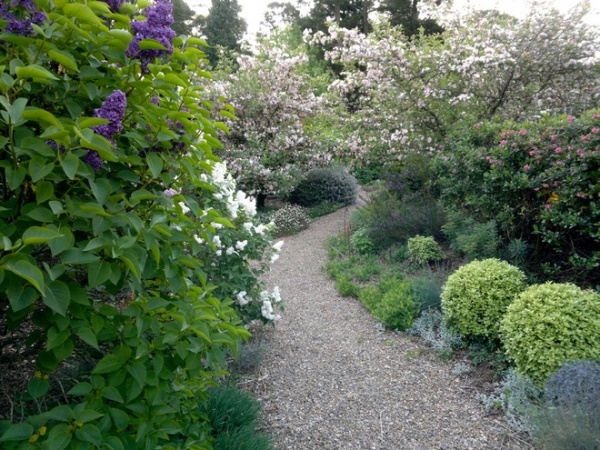
Butterflies love alleys. My borders and beds contain lots of tall plants — Joe Pye Weed (Eupatorium spp) and ironweed (Vernonia fasciculata) and cup plant (Silphium perfoliatum) — that reach from 6 to 10 feet tall. The meandering paths among these plants are insect highways, especially for butterflies like monarchs and swallowtails (and certainly for birds), who come sweeping down the empty avenues protected by the tall plants on both sides. I’m not sure if this is an act of joy or survival, but it’s pretty clear that open runways like this help funnel in the butterflies toward nectar and host plants.
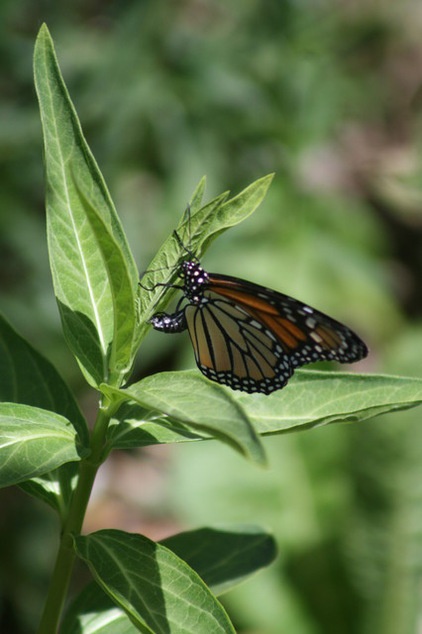
Monarchs prefer to lay eggs on milkweed that’s a bit out in the open. Any milkweed (Asclepias spp) that’s in a dense pocket of vegetation is often, but not always, left alone. Now if you’re raising monarchs, left-alone milkweed isn’t what you want, and it’s certainly not what you want even if you’re just trying to help them rebuild their population numbers after several years in free fall.
I’ve handled this two ways in both my garden and in landscapes I design for clients:
Make sure milkweed is the tallest plant in a grouping, and keep it several feet away from other tall plants where predators might be.Bring milkweed toward the front of the border and beds. This strategy also makes finding eggs easier, as well as plucking leaves to feed to any caterpillars you’re raising inside.
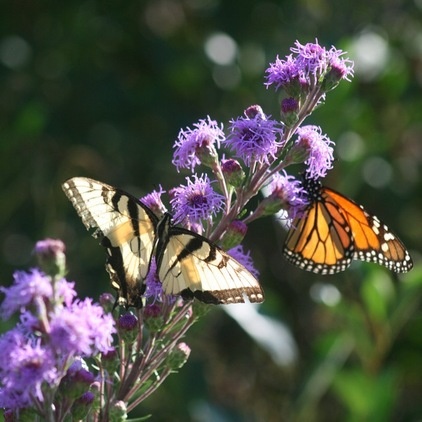
Place preferred nectar sources near host plants. Meadow blazingstar (Liatris ligulistylis) starts blooming in midsummer. This year I didn’t see one monarch until it started blooming, and once it did, I had about 40 eggs on milkweed within a week.
You don’t have to place a favorite nectar source right by a caterpillar host plant for butterflies, but certainly within view makes sense. It can be trial and error discovering what plants butterflies prefer to gather nectar from in your area, but a sure place to start is regional lists of native plants, since those are what the butterflies evolved with over time.
6 Plants That Beat Butterfly Bush for the Wildlife Draw
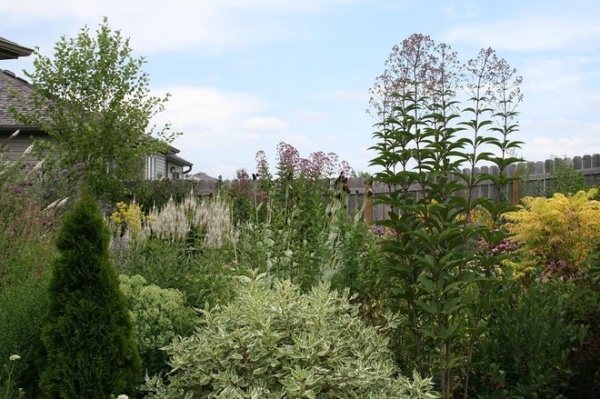
Butterflies like perches. I mentioned some tall perennials earlier, to which you could add tall coreopsis (Coreopsis tripteris) and gray-headed coneflower (Ratibida pinnata). Like any creature, butterflies like to rest in a safe space as well as survey the landscape from a stable location, and so tall plants fit the bill. But small trees and tall shrubs also work.
A varied structure is ideal in a butterfly garden, from a mix of shrubs, trees and flowers to open spaces. Wherever a butterfly can perch is a prime spot for sunning themselves and warming up after a cool morning (you’ll see others insects doing this, too, like bumblebees).
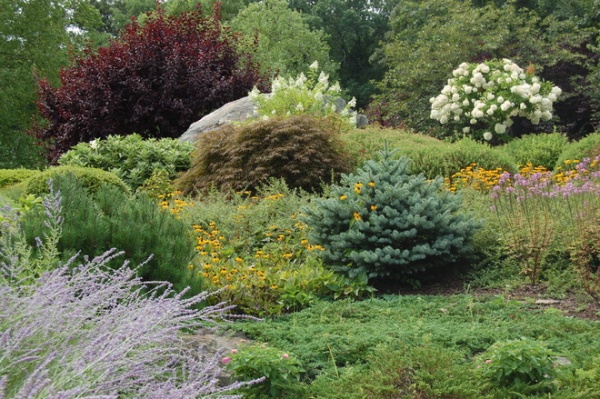
Caterpillars like dark places in which to form a chrysalis. This isn’t a hard and fast rule, since I’ve found many a chrysalis on my siding, fence and garden pots. If you don’t raise caterpillars inside, make sure there are safe, deep, dense ares in your garden where they can form a chrysalis. The undersides of decks are great; so too are thick hedges and shrubs, or just densely planted areas (the latter provides more wildlife value to tons more species than you can possibly imagine — open mulch areas are the enemy of wildlife, just like lawn).
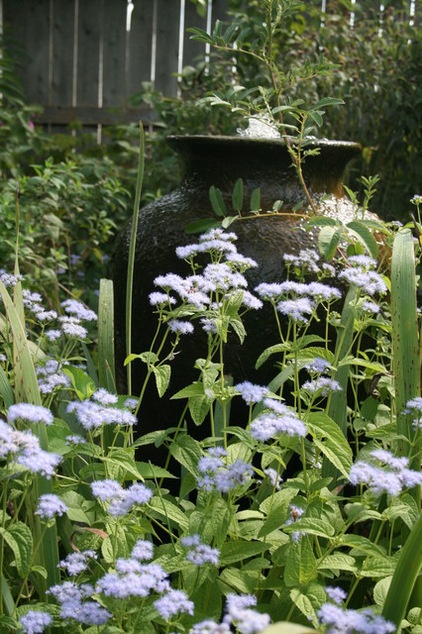
Water isn’t just for birds and mammals. I’ve seen all manner of insects at my water fountain and birdbath. During a rainless July, I lost count of how many beneficial wasps tiptoed to the water’s edge and sipped a few drinks. Butterflies also perform puddling, sipping minerals from a damp area of mud, sand or rock. Open flyways in your landscape are ideal places to leave bare ground in low areas so a bit of water can collect there.
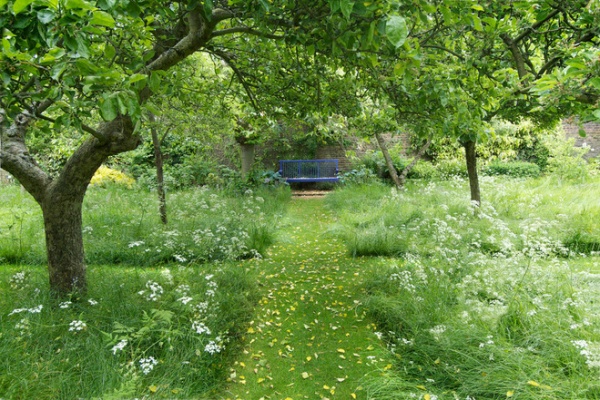
Be patient and hold still in the landscape. Butterflies, and pretty much any insect seeking nectar or pollen, demand sculpture-like stillness on your part. In a million years, you couldn’t hope to catch up with them as they fly around the garden, and any sudden movement will scare them off. Your only option is to find a comfortable vantage point and sit motionless for as long as you can.
It seems contrary that such stillness in the garden is the way to learn from frenetic insects, but the lesson applies to all of life I think — when we are overwhelmed, lost, confused, sad or even happy, sitting still and letting the mind wander gets us back into mental shape.
Make sure your garden has a place where you can sit and see a large chunk of the action, maybe atop a hill or on a raised patio. Also make sure that the view is relatively unobstructed. Better yet, sit down on one of the flight highways and watch what zooms overhead. Soon you’ll be thinking like a butterfly and designing in tune with nature.
More:
Be a Butterfly Savior — Garden for the Monarchs
Be a Citizen Scientist to Help Wildlife, Learn and Have Fun Too












